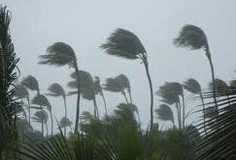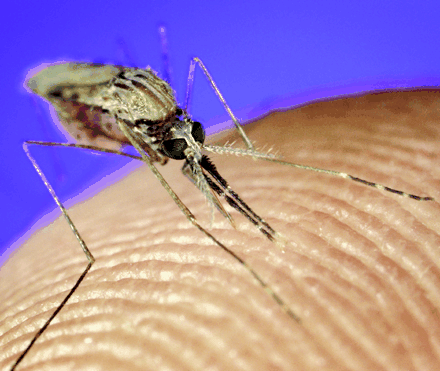Review Overview
1. Diarrhea
Diarrhea is the most common problem that can affect your trip. I always say, “Listen to your mom for good travel eating advice.” Don’t eat anything that is not properly and thoroughly cooked. Avoid tap water, ice, and veggies washed in tap water. If the restaurant or food stand looks dirty or the chef has a sore on his hand, don’t eat there!
But I confess, I am what travel docs call an “adventurous eater” and I don’t always follow my own advice. For those who do the same, and get diarrhea, there are many options.
First, stay hydrated with lots of water and electrolyte drinks. The presence of blood in diarrhea or high fevers can mean the infection is invasive and may require antibiotics. Ciprofloxacin is a common antibiotic for TD (traveler’s diarrhea). Loperamide is an antiperistaltic agent that slows down your bowels. This can be useful if you have a 5 hour bus ride and no toilet. Use caution with anything that “stops you up,” as this may only trap the invasive bacteria in your intestines, giving it more time to do damage.
2. Blisters
A common complaint from the hiking crowd, shopping tourists, and sightseers alike is blisters. Making sure your shoes fit well and are broken in can do the most to prevent blisters. Wearing a new pair of shoes on the day you are trying to hit every museum in the city is not a good idea.
Blisters are caused by friction and heat. Eliminating both decreases your chance of getting a blister and helps slow down the hot spot you have forming on your heel. Many skin lubricants are commercially available and this is a good option for prevention. Perhaps the best treatment is using moleskin. This is available in most hiking/outdoor stores and is basically a felt pad cut to fit and placed over a blister.
3. Respiratory Infections
Nothing fancy here: I am talking about the common cold. The ubiquitous upper respiratory infection is found everywhere, and generally caused by viruses with names more exotic than the capital city of Mongolia (Ulaanbaatar). Symptoms include runny nose, slight fever, ear pressure and muscle aches.
Knowing if this is a simple URI or the beginning of something more serious is the key and the hardest part, even for doctors.
If you’re unsure or feel particularly sick, see a healthcare provider!
Symptomatic treatment centers around nasal decongestants like pseudoephedrine, and fever control with acetaminophen or paracetamol. Inhaled nasal steroid sprays can also help with ear pressure and work wonders for travelers with nasal stuffiness or “ear fullness”. Staying hydrated and taking time to rest are also key. Remember to have a low threshold for seeking medical help when you are far from home.
4. Bladder Infections
Symptoms include a sense of urinary urgency (“I have to pee and cannot hold it!”) or hesitancy (“I try to pee but cannot get started!”). Most common in women travelers. Darker and stronger smelling urine is often noted. Problems occur when the infection spreads to the kidneys, causing fevers and side pain. This requires serious help and antibiotics. Common medications used to treat Urinary Tract Infections (UTIs) include tmp/smx or ciprofloxacin.
The most common bacterial cause is E. Coli, a bacteria found commonly in feces. Hygiene, including regular showers and changing and wearing clean underwear, can help prevent UTI’s.
When using the toilet, women should wipe “front to back” to prevent bacteria from the back reaching the front. Staying well hydrated also helps flush the area through frequent urination. Cranberry juice has been shown to prevent bacteria from sticking to the cells of the urinary tract.
5. Tooth Injuries
Nothing ruins a trip like having a tooth problem. Loose dental work, fillings, cavities and chipped teeth are all potential culprits. Make sure you visit your dentist before your trip, especially if you are gone for more than a week or two.
Problems on the road can be temporarily dealt with using a few basic supplies from your travel first aid kit. Clove oil can be placed on a cotton ball or cotton tipped stick to help relieve localized mouth pain. Temporary filling material, such as Cavit or zinc oxide eugenol (ZOE) can be used to fill holes, smooth rough surfaces and protect the nerves underneath. Evan candle wax works in a tough spot.
Warm salt water rinses can help keep problem areas clean, and then you should start looking for a dentist. Mouth infections can be very painful and dangerous. Don’t delay treatment.
6. Superficial Skin Infections
Cuts and scrapes happen when you travel. Superficial infections in these cuts also occur, as people are traipsing through jungles, climbing on and off buses and sitting in dirty pubs. Local infections are marked by redness and swelling around a break in the skin. Warning signs include fevers, pus or discharge from the wound, and pain out of proportion to the injury.
Eliminate another worry by making sure your tetanus vaccine is current before you travel.
Keep your cuts clean and protected if at all possible. Open wounds should be thoroughly cleaned and irrigated as soon as possible. Use lots of soap and water, make sure there is no debris in the wound, and apply a topical antibiotic cream.
Cover the area with a clean, dry dressing that gets changed at least twice per day. Clean the area often, again with soap and water.
I try to draw a circle (using an ink pen) around the area of redness, so that I can tell if the infection is spreading and moving outside my circle. If the infection looks bad or if you have other medical conditions or problems, get yourself to a healthcare worker.
7. Mosquito Bites
Mosquitoes carry diseases like malaria, dengue, yellow fever and many more. Avoid being bitten by wearing long sleeves, long pants and being prepared with a few items. Using a permethrin spray on your clothing, as well as using tents and curtains, can reduce bites. For personal protection, a 35% concentration of DEET spray should do the trick.
Anybody who sleeps outdoors or with open windows should seriously think about using mosquito netting.
8. Muscle Aches and Pains
Uncomfortable sleeping positions on trains and planes, lugging heavy luggage and lots of new activity can lead to sore muscles on the road. Ibuprofen is a great medicine for muscle soreness and should be carried in every first aid kit. Take ibuprofen with food, as it may cause problems with the stomach lining.
Acetaminophen is another great option, although it does not reduce inflammation like ibuprofen. These medications are available in most pharmacies and general stores around the world.
9. Jet Lag
Wide-awake at 3 AM, only to be drowsy at lunchtime. Problems acclimating to a new time zone can slow down trips, ruin meetings and make for grumpiness.
There is no magical cure for jet lag but there are a few things you can do to help. Bright light stimulates your body to be awake, so if you need to be awake, open the curtains or get outside. Conversely, if you need to get yourself to bed, use dim lights inside and sunglasses if you must be outdoors.
10. Sexually Transmitted Diseases
People like to have a good time on their trips, and for some that includes sex. But nobody wants to come home with an unwanted “souvenir” from his or her trip, like a sexually transmitted infection.
All contact with a new partner should be made using a latex barrier, like a condom. Common infections include syphilis, gonorrhea and herpes. HIV is another large concern and should be at the top of everybody’s mind when clothes start coming off. Condoms help prevent infection and pregnancy.
 Vitamin Agent The Health & Naturalistic Source
Vitamin Agent The Health & Naturalistic Source





